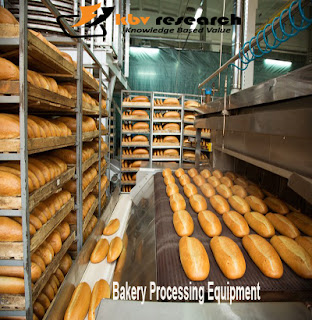Exploring the Dynamics of the Cocoa Market
The cocoa market, a cornerstone of the confectionery industry, is characterized by its rich history, complex supply chain, and enduring global appeal. As consumers indulge in their favorite chocolate treats, stakeholders across the cocoa value chain navigate a landscape shaped by diverse forces.
In this blog, we delve into the growth drivers, restraints,
market segments, and key players driving the cocoa market forward.
Growth Drivers:
Rising Chocolate Consumption
The increasing demand for chocolate, driven by growing
affluence, urbanization, and changing lifestyles, serves as a primary growth
driver for the cocoa
market. Emerging markets, in particular, exhibit a growing appetite for
chocolate products, propelling demand for cocoa.
Health and Wellness Trends
Despite its indulgent appeal, chocolate is experiencing a
renaissance in the health and wellness sector. Dark chocolate, in particular,
is celebrated for its antioxidant properties and potential health benefits,
driving demand for premium cocoa products.
Sustainability Initiatives
Ethical sourcing, sustainability, and traceability have
become central themes in the cocoa market. Chocolate manufacturers and
retailers are under pressure to ensure transparency and accountability in their
supply chains, prompting investments in sustainable cocoa production and
community development initiatives.
Product Innovation
The cocoa market is witnessing a surge in product
innovation, with manufacturers introducing novel formulations, flavors, and
packaging formats to cater to evolving consumer preferences. From artisanal
chocolates to functional cocoa-based beverages, innovation fuels market growth
and differentiation.
Restraints:
Supply Chain Vulnerabilities
The cocoa industry grapples with supply chain
vulnerabilities, including climate change, pest infestations, and geopolitical
instability in major cocoa-producing regions. These factors pose significant
risks to cocoa production and supply, leading to price volatility and supply
disruptions.
Price Fluctuations
Cocoa prices are notoriously volatile, influenced by factors
such as weather conditions, currency fluctuations, and speculative trading.
Price instability poses challenges for cocoa farmers, traders, and
manufacturers, impacting profitability and investment decisions.
Environmental and Social Challenges
Deforestation, soil degradation, and labor issues remain
persistent challenges in the cocoa sector. Environmental degradation threatens
the long-term sustainability of cocoa production, while concerns over child
labor and fair trade practices underscore the need for ethical sourcing and
responsible supply chain management.
Market Segments:
Cocoa Beans
The primary segment of the cocoa market, encompassing the
production, trading, and processing of cocoa beans for chocolate and
confectionery products.
Cocoa Powder
Widely used in baking, beverages, and culinary applications,
cocoa powder represents a significant segment of the cocoa market, valued for
its rich flavor and versatility.
Cocoa Butter
A vital ingredient in chocolate manufacturing, cocoa butter
contributes to the smooth texture, mouthfeel, and shelf stability of chocolate
products.
Key Players:
Cargill, Incorporated
One of the largest cocoa processors and traders globally,
Cargill plays a pivotal role in the cocoa market, with extensive operations in
cocoa sourcing, processing, and supply chain management.
Barry Callebaut AG
As a leading manufacturer of cocoa and chocolate products,
Barry Callebaut boasts a diverse portfolio of cocoa ingredients, gourmet
chocolates, and confectionery solutions, catering to the needs of food
manufacturers and retailers worldwide.
Mars, Incorporated
A prominent player in the chocolate industry, Mars operates
a vertically integrated cocoa supply chain, encompassing cocoa sourcing,
processing, and chocolate manufacturing, with a commitment to sustainability
and responsible sourcing.
Conclusion
In conclusion, the cocoa market presents a tapestry of
opportunities and challenges, driven by consumer trends, sustainability
imperatives, and market dynamics. As stakeholders navigate this dynamic
landscape, collaboration, innovation, and responsible stewardship emerge as
guiding principles for a resilient and thriving cocoa industry.



Comments
Post a Comment